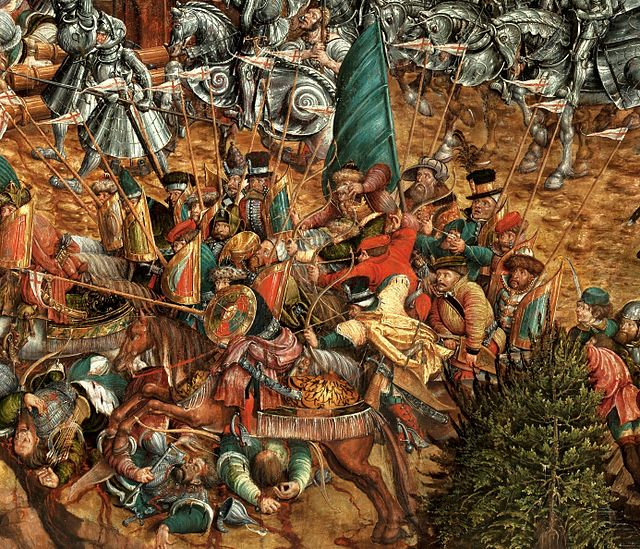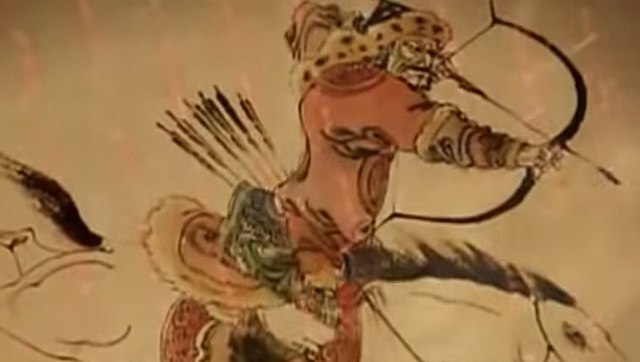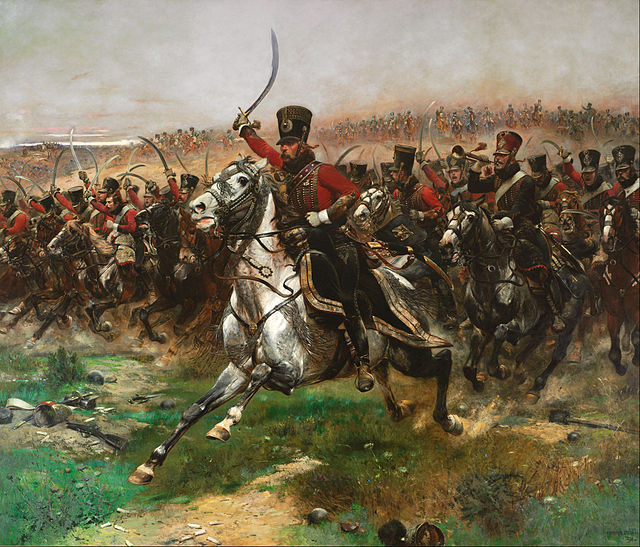A hussar was a member of a class of light cavalry, originating in Central Europe (Hungary) during the 15th and 16th centuries. The title and distinctive dress of these horsemen were subsequently widely adopted by light cavalry regiments in European armies during the late 17th and 18th centuries. By the 19th century, hussars were wearing jackets decorated with braid plus shako or busby fur hats and had developed a romanticized image of being dashing and adventurous.
Archduke Stephen of Austria, Palatine of Hungary, in 19th-century Hungarian general's hussar style gala uniform; with characteristic tight dolman jacket, loose-hanging pelisse over-jacket, and busby
Hungarian hussar in the 16th century. Woodcut by Jost Amman
Polish Winged Hussar, painting by Aleksander Orłowski
Hussar of the Magdeburg Hussar Commando (1763, drawing from Richard Knötel, Uniformenkunde, 1893)
Light cavalry comprised lightly armed and armored cavalry troops mounted on fast horses, as opposed to heavy cavalry, where the mounted riders were heavily armored. The purpose of light cavalry was primarily raiding, reconnaissance, screening, skirmishing, patrolling, and tactical communications. Prior to the 17th century they were usually armed with swords, spears, javelins, or bows, and later on with sabres, pistols, shotguns, or carbines.
Polish-Lithuanian light cavalry during the Battle of Orsha in 1514, by Hans Krell
The infamous Charge of the Light Brigade, in the Battle of Balaclava in 1854 (painted by William Simpson in 1855)
Mongol soldier on horseback, preparing a mounted archery shot
French 4th Hussar at the Battle of Friedland, 14 June 1807. Vive L'Empereur! by Édouard Detaille, 1891.








